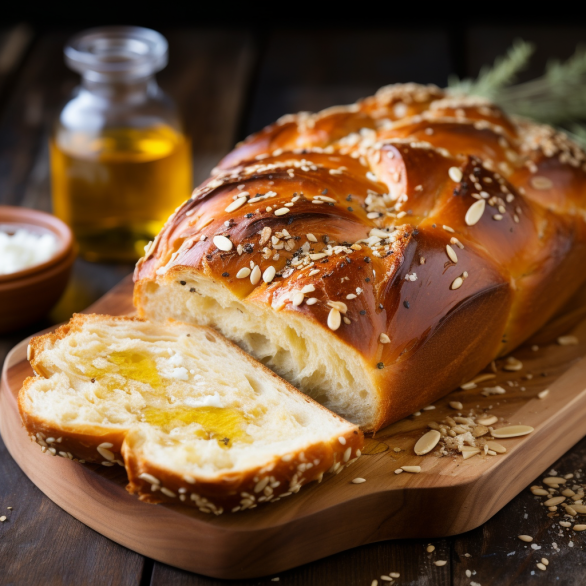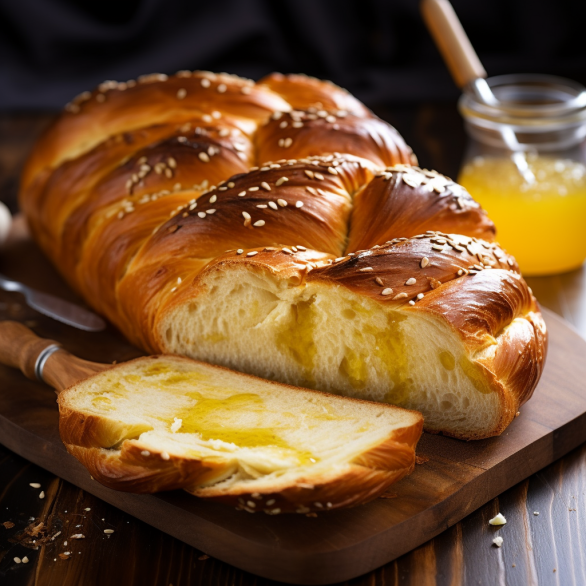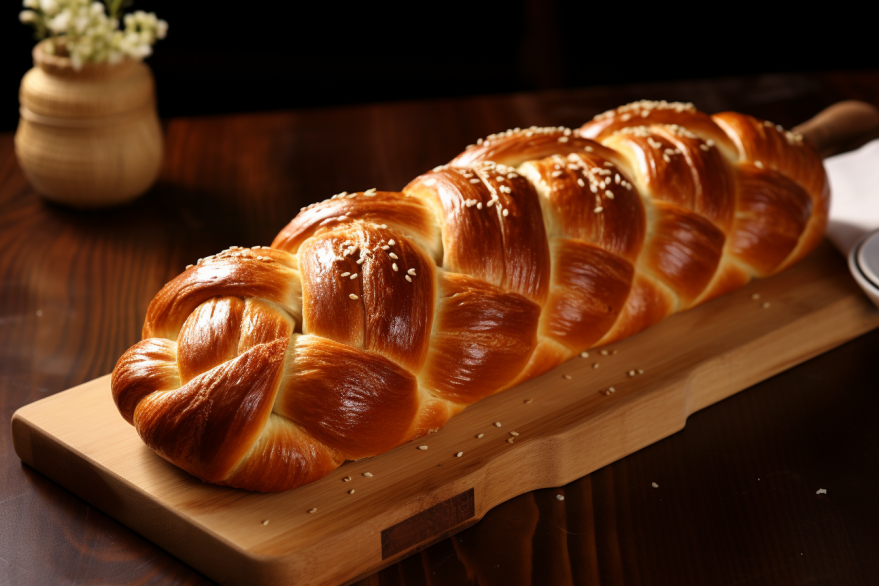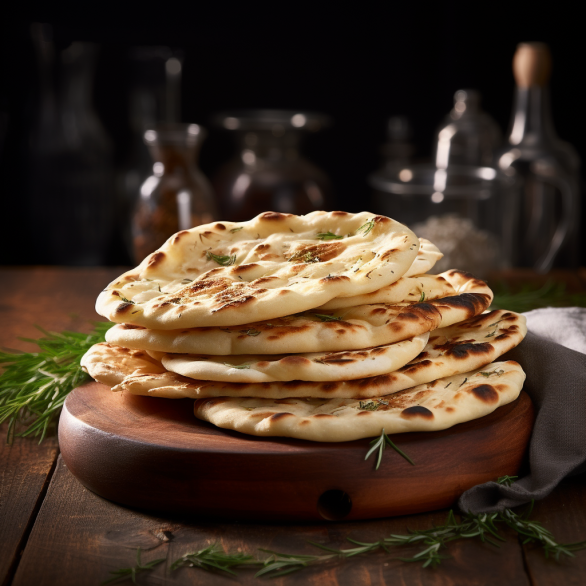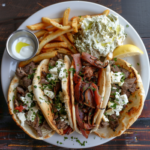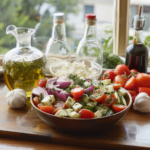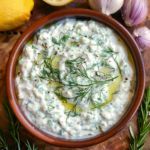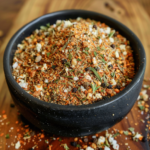Immerse yourself in the captivating world of Greek bread-making with a culinary adventure that showcases the intricacies and flavors of Horiatiko Psomi. As you explore the richness of this traditional bread, you will discover how it is deeply rooted in Greek culture and history. With each region offering its unique twist, you will be treated to a diverse array of bread varieties that will tantalize your taste buds. Embark on this delightful journey filled with warmth, tradition, and the artistry of Greek bread-making.
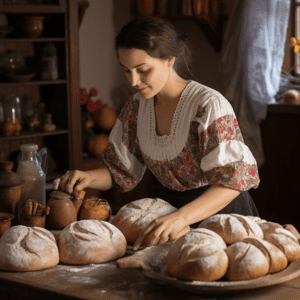
1. The History of Greek Bread-Making
Greek bread-making has a long and storied history that dates back thousands of years. Bread was considered a staple food in Ancient Greece and played a crucial role in the daily lives of its inhabitants. The ancient Greeks were skilled bakers and incorporated various grains, such as barley, wheat, and rye, into their bread recipes.
Throughout history, Greek bread-making techniques evolved and adapted to the different influences and resources available in each region of Greece. From the basic unleavened bread of ancient times to the intricate and flavorful bread varieties we see today, Greek bread-making has truly stood the test of time.
2. The Significance of Horiatiko Psomi
2.1 The Origins of Horiatiko Psomi
Horiatiko Psomi, also known as village bread, is one of the most celebrated bread varieties in Greek cuisine. Its origins can be traced back to the ancient rural villages of Greece, where a simple, rustic style of bread-making was prevalent. Horiatiko Psomi embodies the essence of traditional Greek bread, with its hearty texture and robust flavor.
2.2 The Role of Horiatiko Psomi in Greek Cuisine
Horiatiko Psomi holds a special place in Greek cuisine as it complements a wide range of dishes. Its crusty exterior and soft, chewy interior make it the perfect accompaniment to dips, stews, and soups. The bread’s ability to soak up flavors and add a satisfying bite to any meal has made it a beloved staple in Greek households and tavernas alike.
3. Regional Variations of Horiatiko Psomi
3.1 Northern Greece: Boumbes Psomi
In Northern Greece, you will find a unique variation of Horiatiko Psomi called Boumbes Psomi. This bread is characterized by its round shape and dense texture. Traditionally, it is baked in outdoor ovens, giving it a smoky, earthy flavor. Boumbes Psomi is often enjoyed with traditional Greek cheeses, olives, and dried meats.
3.2 Southern Greece: Lagana Bread
Lagana Bread is a traditional bread commonly prepared in Southern Greece during the Lenten period leading up to Easter. This flatbread is made with a mixture of white and whole wheat flours and is traditionally adorned with sesame seeds. The unique aspect of Lagana Bread is its rectangular shape, symbolizing the unleavened bread eaten during the Last Supper.
3.3 Aegean Islands: Daktyla
Daktyla, meaning “fingers” in Greek, is a delightful pastry-like bread typically made on the Aegean Islands. These elongated, finger-shaped pastries are sweet treats that are often enjoyed during festivals and celebrations. The dough is delicately flavored with orange blossom water and cinnamon, resulting in a unique and aromatic bread experience.
3.4 Crete: Paximadi
Paximadi is a traditional Cretan bread that showcases the resourcefulness and practicality of Greek bread-making. This hard, dry bread is made by twice-baking loaves of Horiatiko Psomi until they become crunchy and long-lasting. Paximadi is commonly enjoyed with olive oil, cheese, and dried fruits, and is a popular choice for Greek salad croutons.
3.5 Peloponnese: Eliopsomo
Eliopsomo, or olive bread, hails from the Peloponnese region of Greece. It is characterized by its strong olive flavor, thanks to the addition of kalamata olives and olive oil to the dough. This savory bread pairs perfectly with feta cheese, tomatoes, and a drizzle of extra virgin olive oil.
4. The Traditional Bread-Making Process
4.1 Ingredients for Horiatiko Psomi
To make traditional Horiatiko Psomi, you will need:
- 4 cups of all-purpose flour
- 2 teaspoons of active dry yeast
- 2 teaspoons of salt
- 2 cups of warm water
- Olive oil for greasing
4.2 Kneading and Rising
Start by mixing the flour, yeast, and salt in a large mixing bowl. Slowly add warm water to the mixture and stir until a dough forms. Transfer the dough onto a lightly floured surface and knead for about 10 minutes until it becomes soft and elastic. Place the dough back into the mixing bowl, cover it with a clean kitchen towel, and let it rise in a warm place for approximately 1 hour or until it has doubled in size.
4.3 Shaping and Decoration
Once the dough has risen, punch it down to release any air bubbles. Divide the dough into two equal portions and shape them into oval loaves. With a sharp knife, make diagonal cuts on the surface of the loaves to create a decorative pattern. This not only enhances the visual appeal of the bread but also allows the loaves to expand during baking.
4.4 Baking and Serving
Preheat your oven to 425°F (220°C). Place the loaves on a greased baking sheet and bake for about 25-30 minutes or until they turn golden brown and sound hollow when tapped on the bottom. Allow the bread to cool on a wire rack before slicing and serving. Enjoy it with your favorite Greek dishes or simply with olive oil and herbs as a delicious appetizer.
5. The Cultural Significance of Greek Bread
Bread holds great cultural significance in Greek society. It is much more than just a food item; it is a symbol of sustenance, community, and tradition. Breaking bread together is seen as a gesture of hospitality and friendship, a way to share and connect with others. Greek bread-making techniques and recipes have been passed down through generations, preserving the essence of Greek culture and identity.
6. Bread-Baking Traditions and Superstitions
6.1 Rituals Associated with Bread-Making
Bread-making in Greece is often accompanied by various rituals and superstitions. For example, it is customary for Greek bakers and home cooks to make a small cross on the unbaked bread to ward off evil spirits and ensure good luck. Additionally, the first slice of bread is sometimes reserved for the household guardian spirits or Gods to show gratitude and seek their blessings.
6.2 Bread as a Symbol of Hospitality
Greek hospitality is legendary, and bread plays a crucial role in welcoming guests. When a visitor arrives, it is customary to offer them a piece of bread as a sign of respect and friendship. Breaking bread together symbolizes unity and demonstrates the importance of sharing and caring for one another.
6.3 Bread in Religious Ceremonies
Bread has deep religious significance in the Greek Orthodox Church. It is a central element in the sacrament of Holy Communion, symbolizing the body of Christ. In religious ceremonies, a special type of bread called “prosforo” is prepared by the faithful and offered to the church. This bread is later blessed and distributed to the congregation.
7. The Role of Bread in Greek Festivals
Greek festivals are lively celebrations of culture, traditions, and food. Bread often takes center stage during these festive occasions. In many festivals, intricately designed breads are crafted and displayed, showcasing the skill and creativity of Greek bakers. These decorative breads, known as “artos,” are often offered as a symbol of prosperity and abundance.
8. Horiatiko Psomi in Modern Greek Society
8.1 Traditional Bakeries in Greece
Traditional bakeries, known as “fournoi,” continue to thrive in Greece. These establishments are beloved in local communities, often serving as more than just places to buy bread. They are meeting points where neighbors catch up, exchange stories, and share a warm loaf of Horiatiko Psomi. Traditional bakeries preserve the art and tradition of Greek bread-making, keeping it alive for future generations.
8.2 Horiatiko Psomi in Home Cooking Today
While many Greeks still rely on bakeries for their daily bread needs, home baking has also seen a resurgence in recent years. With the rise of social media and the popularity of cooking shows, more and more Greeks are discovering the joy of bread-making in their own kitchens. Horiatiko Psomi recipes, along with other Greek bread variations, are being shared and celebrated, fostering a sense of culinary pride and connection to Greek heritage.
9. Greek Bread-Making Recipes
9.1 Horiatiko Psomi Recipe
Ingredients:
- 4 cups of all-purpose flour
- 2 teaspoons of active dry yeast
- 2 teaspoons of salt
- 2 cups of warm water
- Olive oil for greasing
Instructions:
- In a large mixing bowl, combine the flour, yeast, and salt.
- Slowly add the warm water and stir until a dough forms.
- Transfer the dough onto a lightly floured surface and knead for about 10 minutes until it becomes soft and elastic.
- Place the dough back into the mixing bowl, cover it with a clean kitchen towel, and let it rise in a warm place for approximately 1 hour or until it has doubled in size.
- Once the dough has risen, punch it down to release any air bubbles.
- Divide the dough into two equal portions and shape them into oval loaves.
- Use a sharp knife to make diagonal cuts on the surface of the loaves to create a decorative pattern.
- Preheat your oven to 425°F (220°C).
- Place the loaves on a greased baking sheet and bake for about 25-30 minutes or until they turn golden brown and sound hollow when tapped on the bottom.
- Allow the bread to cool on a wire rack before slicing and serving.
9.2 Boumbes Psomi Recipe
Ingredients:
- 4 cups of bread flour
- 2 teaspoons of active dry yeast
- 2 teaspoons of salt
- 2 cups of warm water
- Olive oil for greasing
Instructions:
- Follow the same instructions as the Horiatiko Psomi recipe for the mixing, kneading, and rising stages.
- Shape the dough into a round loaf instead of an oval shape.
- Place the dough on a greased baking sheet and cover it with a clean kitchen towel.
- Let the bread rise for an additional 30 minutes.
- Preheat your oven to 425°F (220°C).
- Bake the Boumbes Psomi for approximately 30-35 minutes or until it is golden brown and sounds hollow when tapped on the bottom.
- Allow the bread to cool on a wire rack before slicing and serving.
Repeat the same format for the Lagana Bread, Daktyla, Paximadi, and Eliopsomo recipes.
10. Exploring Greek Bread-Making Culture
Greek bread-making culture is a vibrant tapestry of flavors, traditions, and stories. Each bite of a warm, freshly baked loaf transports you to the heart of Greek cuisine and connects you to the rich heritage of a country that has cherished the art of bread-making for centuries. So, next time you enjoy a slice of Horiatiko Psomi or any other Greek breads, savor it, knowing that you are experiencing a piece of history and a taste of Greece’s remarkable bread-making tradition.
Unlock the Art of Greek Bread-Making
Embark on a journey to master the craft of Greek bread-making, generously sponsored by Digital Marketing Company, Digital Heroes Caffe [https://digitalheroescaffe.com], and Financial Navigator 360 [https://finnav360.news]. As we delve into the world of Greek bread, allow us to introduce you to a carefully curated selection of Greek cooking websites that offer valuable insights into the art of crafting traditional Greek bread.
- Greek Mezes Recipe: Start your culinary exploration with traditional Greek meze appetizers that beautifully complement the flavors of Greek bread. Learn how to pair these delightful bites with freshly baked Greek bread, enhancing your dining experience.
- Dolmades: Immerse yourself in the heart of Greek culinary traditions by exploring Dolmadakia, Greek stuffed vine leaves. These dishes exemplify the intricate techniques and rich flavors that are integral to Greek cuisine, much like the artistry behind Greek bread-making.
- YouTube Chef on a Bike: Embark on a culinary adventure with Chef on a Bike on YouTube. Learn the art of Greek bread-making and other Greek delicacies through engaging video content led by passionate Greek chefs who are dedicated to preserving and sharing the essence of Greek cuisine.
- Greek Cooking Academy: Delve deeper into the world of Greek bread-making with the Greek Cooking Academy. Discover comprehensive tutorials, tips, and recipes dedicated to various types of Greek bread, ensuring your bread-making endeavors are a resounding success.
Celebrate the artistry of Greek bread-making and immerse yourself in the rich culinary traditions of Greece. These resources will be your trusted guides as you embark on a flavorful journey to create authentic Greek bread, bringing the warmth of Mediterranean flavors to your table.
posts from www.cookingwithgreekpeople.com with their titles hyperlinked:
- Delicious Greek Hummus Recipe: Discover the secrets to making a creamy and flavorful Greek hummus.
- Baklava: Greek Walnut & Pistachio Cake: Learn how to make traditional Greek Baklava with walnuts and pistachios.
- Greek Festival 2024: Get ready for the upcoming Greek Festival with details and highlights.
- Beef Souvlaki: Juicy and Tender Chunks: A guide to making the perfect Greek beef souvlaki.
- Mediterranean Diet: A Healthy Choice: Explore the benefits of the Mediterranean diet.
- Greek Easter Kokoretsi: Cooking Methods & Recipe: Traditional methods and recipes for Greek Easter Kokoretsi.
- Manuka Honey Health Benefits: Learn about the health benefits of Manuka honey.
- Find Vegetarian Recipes: A collection of delicious vegetarian Greek recipes.
- Greek Christmas Traditions: Discover how Christmas is celebrated in Greece.
- Mediterranean Greek Salad: A Refreshing Delight: Make a refreshing Greek salad with this simple recipe.

